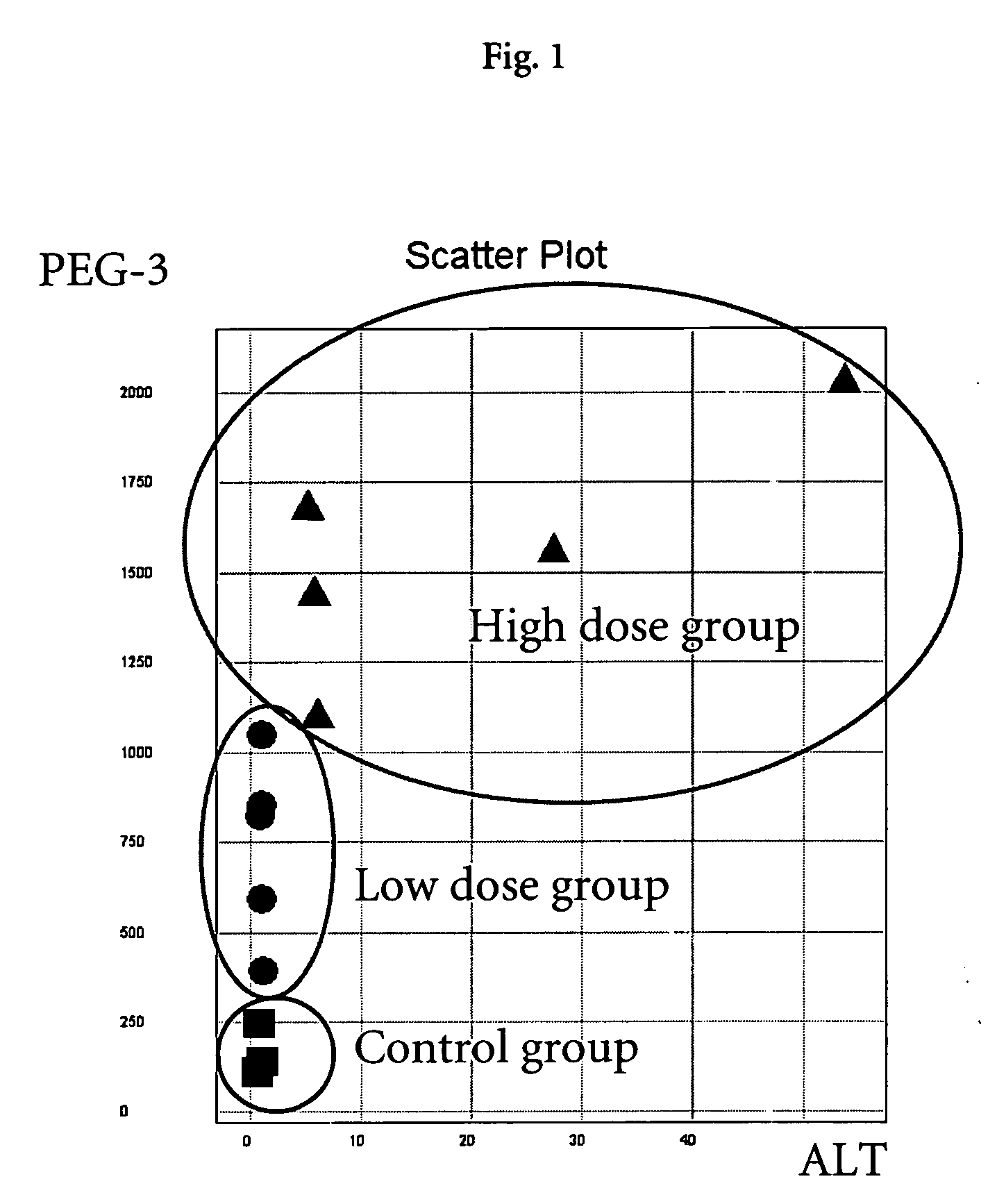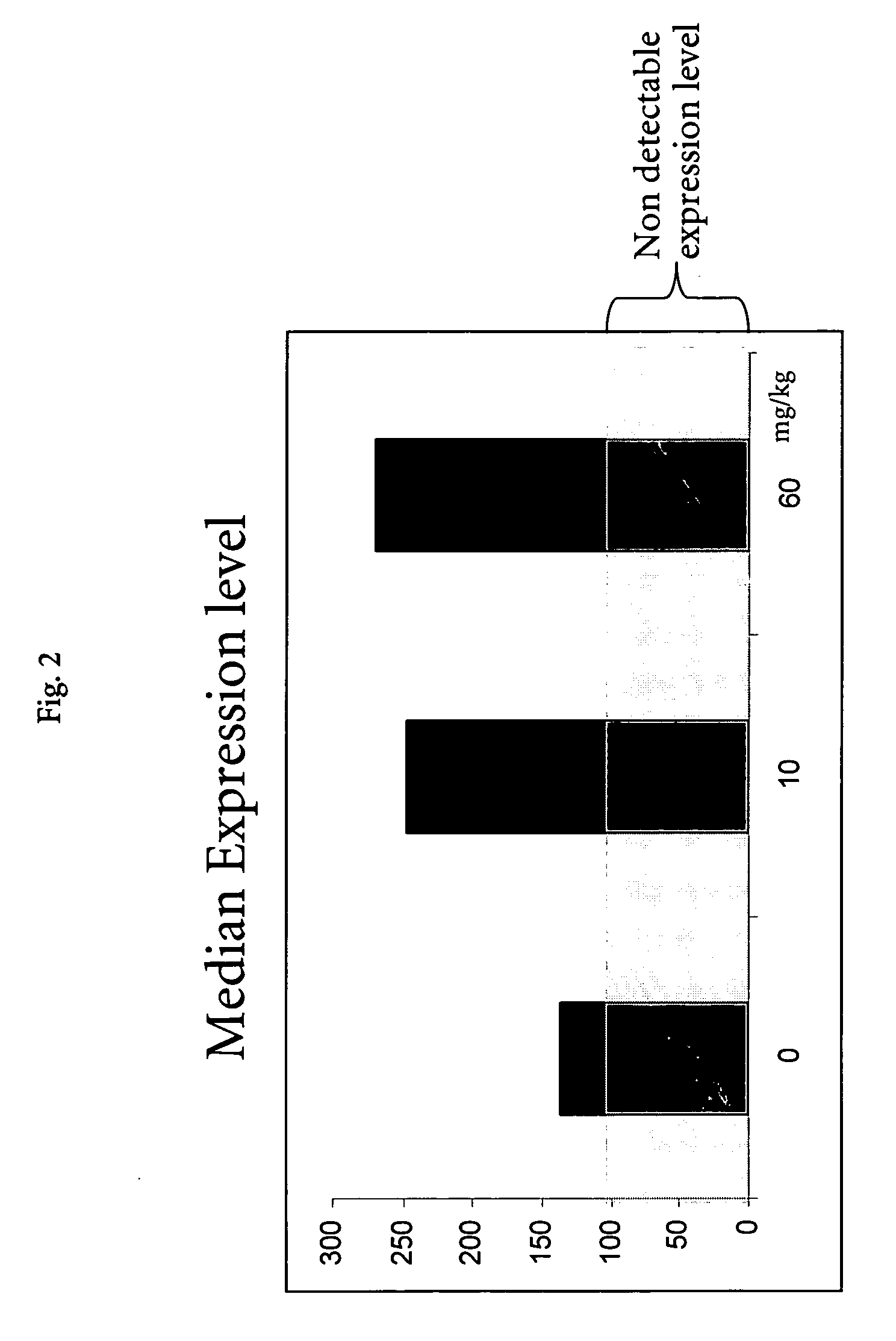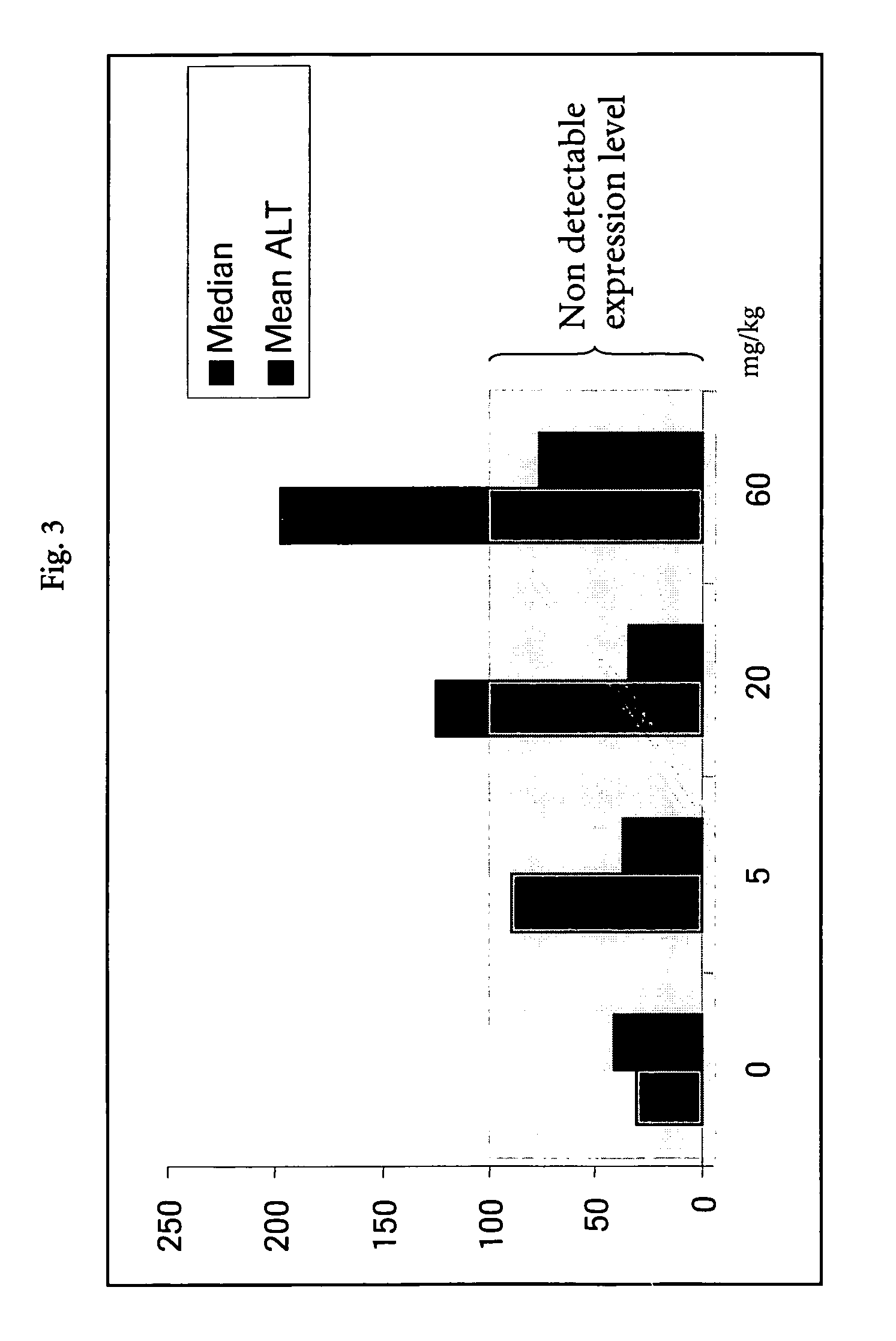Biomarkers and expression profiles for toxicology
a biomarker and toxicology technology, applied in the field of toxicogenomic methods, can solve the problems other problems, and achieve the effect of reducing the likelihood of chemically induced changes in gene expression
- Summary
- Abstract
- Description
- Claims
- Application Information
AI Technical Summary
Benefits of technology
Problems solved by technology
Method used
Image
Examples
example 1
Hepatotoxicity Assay with Non-Human Animals
[0107] All animals received human care as specified by Swiss law and in accordance with the “Guide for the care and use of laboratory animals” published by the NIH. Male Wistar rats (generally 5 animals / dose-group) were purchased from BRL (Füllingsdorf, Switzerland) and housed individually. Treated animals were dosed either orally, intraperitoneally, or intravenously with several doses of test compounds (Table 1). The test compounds were categorized according to their toxic manifestation in the rat liver. Control animals received the same volume of vehicle as placebo. Necropsy was performed 6 or 24 hours after a single administration and liver samples from the left medial lobe were placed immediately in RNALater (Ambion, TX, USA) for RNA extraction and gene expression analysis. Samples in RNALater were stored at −20° C. until further processing. Additional liver samples were snap-frozen in liquid nitrogen for measurement of intrahepatic li...
example 2
Hepatocyte Cell Culture Assay Toxicity
[0108] Hepatocytes were isolated from adult male Wistar rats by two-step collagenase liver perfusion previously described (Goldlin C. R., Boelsterli U. A. (1991). Reactive oxygen species and non-peroxidative mechanisms of cocaine-induced cytotoxicity in rat hepatocyte cultures. Toxicology 69, 79-91). Briefly, the rats were anaesthetized with sodium pentobarbital (120 mg / kg, i.p.). The perfusate tubing was inserted via the portal vein, then the v. cava caudalis was cut, and the perfusion was started. The liver was first perfused for 5 min with a preperfusing solution consisting of calcium-free, EGTA (0.5 mM)-supplemented, HEPES (20 mM)-buffered Hank's balanced salt solution (5.36 mM KCl, 0.44 mM KH2PO4, 137 mM NaCl, 4.2 mM NaHCO3, 0.34 mM Na2HPO4, 5.55 mM D-glucose). This was followed by a 12-min perfusion with NaHCO3 (25 mM)-supplemented Hank's solution containing bovine CaCl2 (5 mM), and collagenase (0.2 U / ml). Flow rate was maintained at 28 m...
example 3
Measurement of Circulating and Hepatic Enzymes
[0109] In the hepatotoxicity assay with non-human animals as described in Example 1, circulating enzymes of hepatic origin, as well as the hepatic lipid content were assessed. Blood samples for clinical chemistry were obtained shortly before sacrifice. The enzymatic activities of aspartate aminotransferase (AST), alanine aminotransferase (ALT), lactate dehydrogenase (LDH) and 5-nucleotidase (5-ND) were measured in serum samples. Liver lipids were extracted using liver homogenates as described by Freneaux et al (Freneaux, E., Labbe, G., Letteron, P., The Le, D., Degott, C., Geneve, J., Larrey, D., and Pessayre, D. (1988). Inhibition of the mitochondrial oxidation of fatty acids by tetracycline in mice and in man: possible role in microvesicular steatosis induced by this antibiotic. Hepatology 8, 1056-62) and the contents of triglycerides, phospholipids and total lipids were measured. Automated analysis was performed using commercially av...
PUM
| Property | Measurement | Unit |
|---|---|---|
| Tm | aaaaa | aaaaa |
| density | aaaaa | aaaaa |
| time | aaaaa | aaaaa |
Abstract
Description
Claims
Application Information
 Login to View More
Login to View More - R&D
- Intellectual Property
- Life Sciences
- Materials
- Tech Scout
- Unparalleled Data Quality
- Higher Quality Content
- 60% Fewer Hallucinations
Browse by: Latest US Patents, China's latest patents, Technical Efficacy Thesaurus, Application Domain, Technology Topic, Popular Technical Reports.
© 2025 PatSnap. All rights reserved.Legal|Privacy policy|Modern Slavery Act Transparency Statement|Sitemap|About US| Contact US: help@patsnap.com



